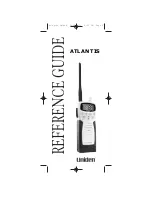
R60354.0009
– Index 2
4
Mounting and Operating Instructions
Optical fiber transmitter modules: LWLS.1, LWLS.2, LWLS.4, LWLS.5
Optical fiber receiver modules: LWLE.1, LWLE.4, LWLE.5
Product description
The optical fiber modules LWLS and LWLE form together a transmission system for data
transmission of industrial signals by means of optical fibers.
Both transmitter and receiver modules have four channels, which are completely independent of
each other, with differential inputs and outputs. All four channels allow the transmission of signals
with a maximum data rate of 800 kbit/s. With their technical features, the optical fiber modules are
intended for the transmission of signals from incremental encoders.
The modules are available in various level and supply voltage variants:
Differential signals with RS422 or Push-pull HTL levels from other sources may also be connected to these devices.
The optical fiber modules are mainly used when signals are to be transmitted in environments with strong interferences
or when, due to high ground potential differences between the signal source and the signal processing equipment,
potential separation is necessary.
High ground potential differences generally appear also in case of large distances between the encoder and the PLC or
any other processing electronics.
The optical fiber cable is failure-safe: it does not constitute any danger in case of damage. Since the light-emitting
component used is not a laser, but a light-emitting diode, the transmission line is totally safe, even when looking directly
into the opened connector or into the broken glass fiber.
The optical fiber cable can be routed through explosive areas.
If necessary, a level conversion can be linked with the potential separation without problem. Since all devices use the
same signal transmission protocol on the optical fiber cable, any transmitter can be combined with any receiver.
Approved purpose
The local standards, directives, provisions and regulations must be adhered to. The installation of the devices can only
be performed by a competent staff trained to that end. The modules must be protected against humidity during storage
and transportation. They shall not be used outside of the ranges specified in the technical data.
Technical characteristics
Designation
Characteristic
Construction
Housing for DIN rail mounting acc. to EN 50 022
Dimensions (W x L H)
22.5 x 110.8 x 88.4 mm
[0.89 x 4.36 x 3.48“]
Protection
IP40, terminals IP20
Optical fiber connection
ST connector, 13 mm,
9 mm,
on the bottom side of the housing
Terminals
Protected against contact, max. conductor diameter: 2.5 mm
2
Glass fiber
Multimode fiber, 50/125 µm, 62.5/125 µm
Max. optical transmission distance
2000 m
Optical fiber synchronisation display
LED is on when the synchronisation is set and blinks when the
synchronisation is lost or the optical fiber cable is broken
Input signals sampling rate
10 MSamples/s
Supply voltage
10
… 30 V DC or 5 V DC ± 5%
Power consumption per module
< 2 W
Operating voltage
reverse connection protection
available
Electrical inputs of the transmitter and
electrical outputs of the receiver
Channels A, B, 0 (C), D with inputs and outputs
A, /A; B, /B, 0 (C), /0 (/C) and D, /D
Order code
Level
Port
Supply voltage
6.LWLS.1
RS422
Input
10 … 30 V DC
6.LWLS.2
HTL, Push-pull
Input (w.o. inv.)
10 … 30 V DC
6.LWLS.4
RS422
Input
5 V DC ± 5%
6.LWLS.5
HTL, Push-pull
Input
10 … 30 V DC
6.LWLE.1
RS422
Output
10 … 30 V DC
6.LWLE.4
RS422
Output
5 V DC ± 5%
6.LWLE.5
HTL, Push-pull
Output
10 … 30 V DC
E
ng
li
sh
























